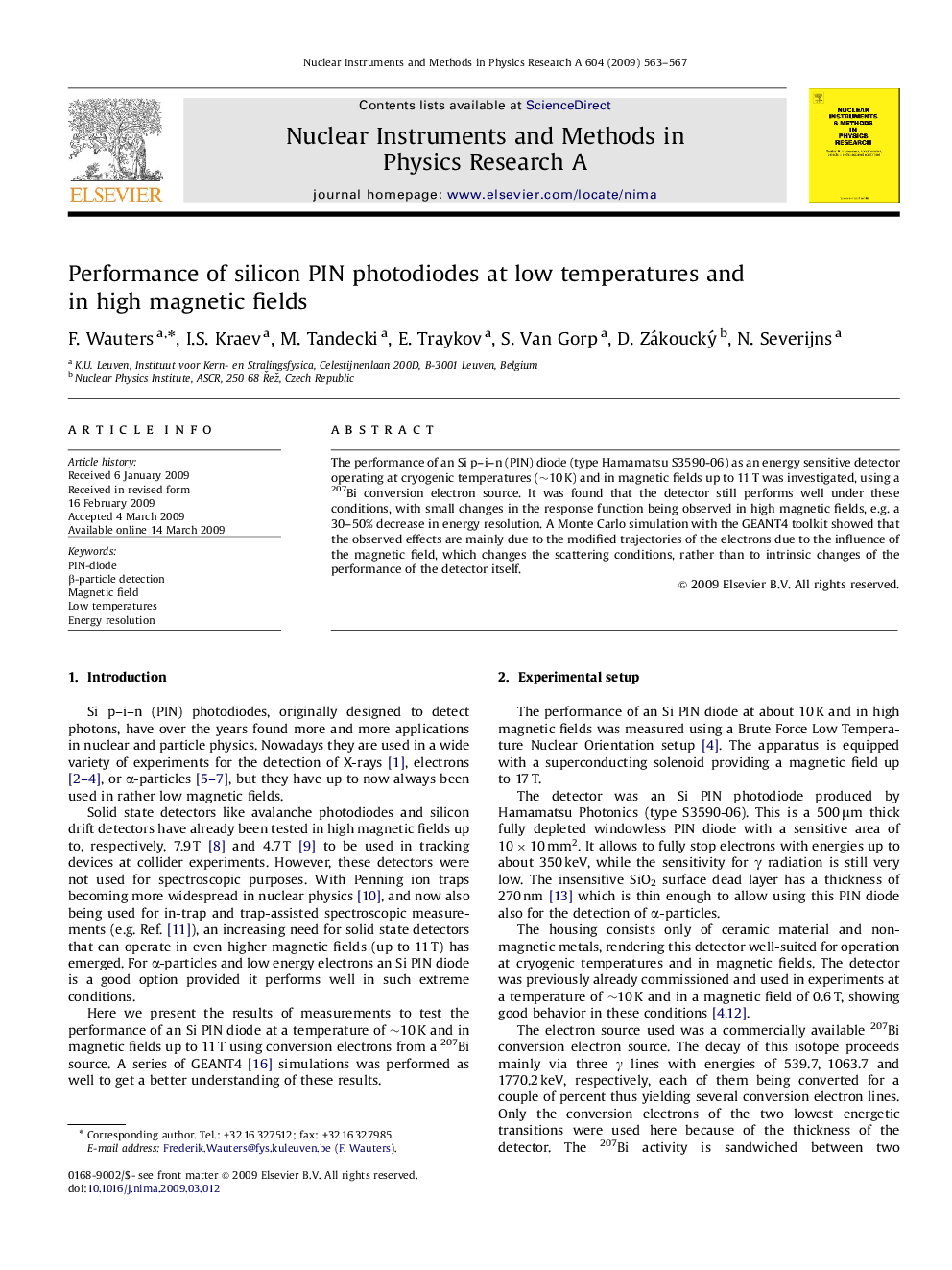| Article ID | Journal | Published Year | Pages | File Type |
|---|---|---|---|---|
| 1828332 | Nuclear Instruments and Methods in Physics Research Section A: Accelerators, Spectrometers, Detectors and Associated Equipment | 2009 | 5 Pages |
Abstract
The performance of an Si p–i–n (PIN) diode (type Hamamatsu S3590-06) as an energy sensitive detector operating at cryogenic temperatures (∼10K) and in magnetic fields up to 11 T was investigated, using a 207Bi conversion electron source. It was found that the detector still performs well under these conditions, with small changes in the response function being observed in high magnetic fields, e.g. a 30–50% decrease in energy resolution. A Monte Carlo simulation with the GEANT4 toolkit showed that the observed effects are mainly due to the modified trajectories of the electrons due to the influence of the magnetic field, which changes the scattering conditions, rather than to intrinsic changes of the performance of the detector itself.
Related Topics
Physical Sciences and Engineering
Physics and Astronomy
Instrumentation
Authors
F. Wauters, I.S. Kraev, M. Tandecki, E. Traykov, S. Van Gorp, D. Zákoucký, N. Severijns,
